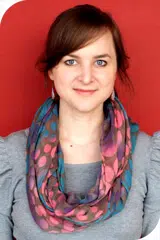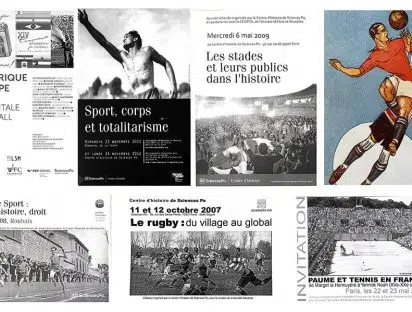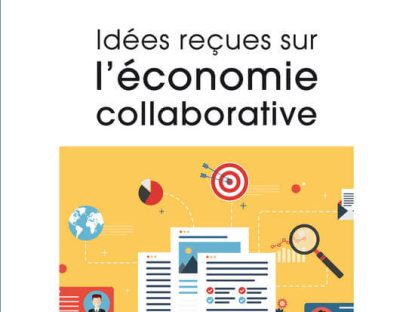
Frauke Austermann
The 12th Shanghai Social Studies Colloquium (SSSC) took place on 8 March 2016 at the Shanghai campus of ESSCA School of Management. Frauke Austermann, campus director at the International School of Management, Cologne and associate researcher at the EU-Asia Institute, presented an in-depth exploration of « Fashion in China ».
China’s thirty years of economic reform and development enabled many of its low income earners transforming to the middle class who contributed massively to China’s market consumption, particularly the fashion industry. Although China now accounts for a third of global luxury spending, the fashion style and characteristics are quite different compared to the ‘West’ and even its neighbours, such as Japan and the Republic of Korea.
Dr. Austermann first highlighted the fast growth of the fashion industry in China, as Chinese luxury buyers consumed over 30 percent of global luxury goods in 2015 compared to only 2 percent in 2000. The increasing Chinese consumption combined with growing cross-border purchases has fundamentally changed global market dynamics.

« Cuteness » – an infantile fashion trend
Dr. Austermann’s main research question is ‘why is contemporary Chinese female fashion style the way it is, namely infantile (aiming at « cuteness”) and characterised by diverse features (different colours, patterns, and materials)’. In the search for answers to this research question, she explained the concepts of fashion and luxury in connection with the concept of culture to the audience. Fashion is “the production and marketing of new styles of clothing and cosmetics,” which is not only an indicator of individual taste but also an expression of a consumer’s social class. Since luxury is “something that is expensive and not necessary;” it supports the idea of ‘symbolising’ buyers’ profession and social status. In the Chinese context, China’s middle class is now also changing its consumption philosophy from buying luxury only to prove social privilege to considering “luxury as an ancestral history while history is an element of luxury.”
Dr. Austermann highlighted that although China accounts for one third of global luxury consumption nowadays, spending per capita is still relatively low. For the time being, the middle class and the number of rich buyers is relatively limited. Despite the ‘new normal’ – or the slowing down of economic development – China therefore still has an enormous potential to boost the luxury economy in the future.
Dr. Austermann continued arguing that fashion is a sociological term, which can be studied from a multi-dimensional view. She indicated seven such multi-dimensional perspectives:
- Geographic difference: fashion becomes more diversified as factors such as the weather, altitude, and humidity affect individual dressing taste.
- Time: style changes rapidly and today’s fashion will not be stylish tomorrow; however, style sometimes returns.
- Religious beliefs: religion may influence fashion, for examples in the form of the the Islamic veil, the Catholic cross, and Buddhists’ prayer beads.
- Economic development: purchase power is essential for luxury purchases.
- Social class: the fashion of professions may be illustrated in the difference between blue-collar and white-collar workers.
- Marketing: fashion is constructed through trends via advertisements on mass media.
- Last, but certainly not least: Politics!

Revolution is fun! Wedding couple in China.
Particularly in the Chinese context, fashion can be highly political. Dr Austermann used photos to illustrate fashion of Chinese leaders from Maoist time to the current Communist Party’s Politburo. The old revolutionary leaders, such as Mao and Deng, were usually dressed in Sun Yat-sen suits while current Chinese leaders are wearing Western suits. Moreover, revolutionary clothing is becoming a fashionable dress again on special occasions, examples of which include some Chinese young couples wearing revolutionary dresses and take their marriage photos not because of trust in ideology but because it is fun. An interesting case is the Chinese first lady, the famous folk singer Peng Liyuan, who acts as a fashion icon for many Chinese citizens.
In the end, Dr. Austermann proposed three hypotheses for further discussion:
- (H1) Contemporary Chinese women’s fashion is a reaction to Maoist times and a comeback of the imperial epoch;
- (H2) Chinese economic development has led to a more individualistic society that is reflected in contemporary Chinese women’s fashion;
- (H3) Hello Kitty reminds of the “lucky cat;” therefore, Hello Kitty fashion satisfies superstitious beliefs.
The audience raised questions, such as the differences between men’s fashion and women’s fashion in China and different fashion trends between China and its neighbours. Some members of the audience also suggested quantitative methods to test the hypotheses and provided suggestions. The lively discussion in the plenary was followed by an informal exchange during a networking dinner.
The twelfth SSSC welcomed researchers from a variety of institutions including East China Normal University, IESE Business School, L’École de Design, and Shanghai International Studies University but also practitioners from the corporate world and media representatives.
The SSSC is an initiative that provides a forum for international and Chinese scholars of various disciplines of the social sciences based in the city of Shanghai. The colloquium offers scholars to present and discuss their research, so as to exchange critique and research ideas, improve their research output, network and socialise, with a view to developing collaborative research projects. The twelfth SSSC focused on Fashion in China.
All papers and the authors’ profiles of the tenth and of previous SSSCs can be read and downloaded under http://www.shanghai-review.org/sssc/. The SSSC is an on-going event and takes place approximately every eight weeks. If you are interested in participating, please contact Maximilian.Rech@essca.fr.
The 13th Shanghai Social Studies Colloquium will be held on Tuesday, 25 April 2016 – 18.00h. Its focus will be on‘China and the Arctic: Natural Resources and Knowledge-Based Sustainable Development’. ESSCA will welcome Prof. Dr. Rasmus Gejdsso BERTELSEN, Professor & Barents Chair in Politics at University of Tromsø – The Arctic University of Norway.




